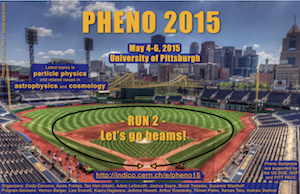Speaker
Hasan Serce
(University of Oklahoma)
Description
The discovery of Higgs boson with mass $m_h=125.09\pm0.24$ GeV confirms the particle content of the standard model but carries some fine-tuning questions along with it. While supersymmetry (SUSY) solves the Big Hierarchy problem (or EW fine tuning) involving quadratic divergences, there is a growing Little Hierarchy problem typified by the increasing gap between the W,Z and h masses ($\sim100$ GeV) and the apparent mass scale of SUSY (multi-TeV range) by LHC sparticle mass bounds. It has been suggested that Little Hierarchy arises from a mismatch between Peccei-Quinn (PQ) and hidden sector intermediate scales $\nu_{PQ} \ll m_{hidden}$. An elegant model which exhibits this behavior was proposed by Murayama, Suzuki and Yanagida (MSY) where PQ symmetry is broken radiatively by driving one of the PQ scalars to negative mass-squared values. Starting with multi-TeV scalar masses and forbidding the $\mu$ term in the superpotential, the radiatively-broken PQ symmetry naturally induces a SUSY $\mu$ term $\sim100-200$ GeV and generates Majorana right-handed neutrino masses. We conclude that Little Hierarchy is indeed a feature expected in SUSY axion models which address the gauge hierarchy problem, the strong CP problem and the SUSY $\mu$ problem. In such scenario, we would expect dark matter to be comprised of an axion plus a higgsino-like admixture.
Authors
Hasan Serce
(University of Oklahoma)
Howard Baer
(University of Oklahoma)
Kyu Jung Bae
(University of Oklahoma)
